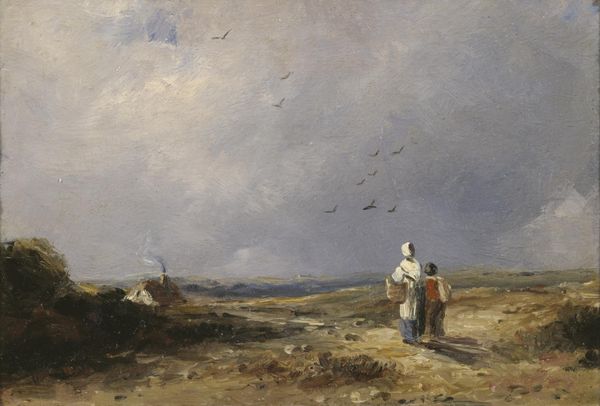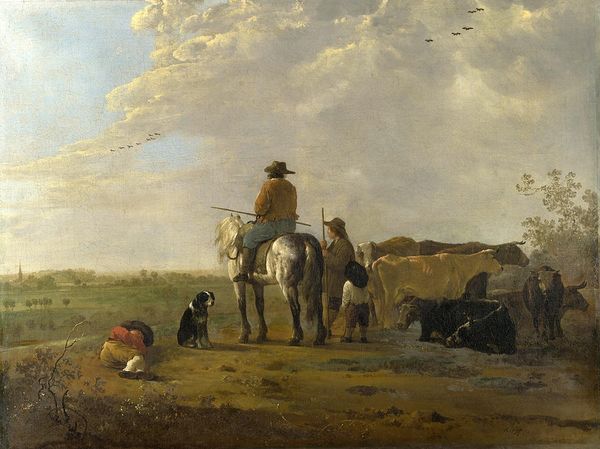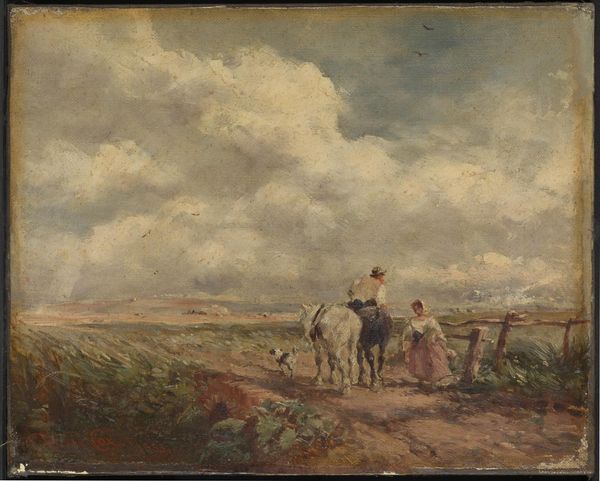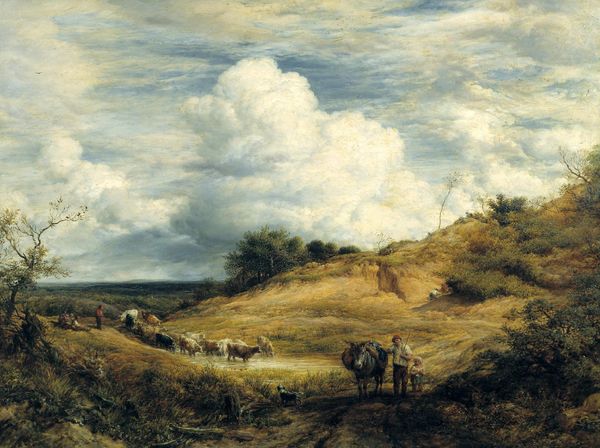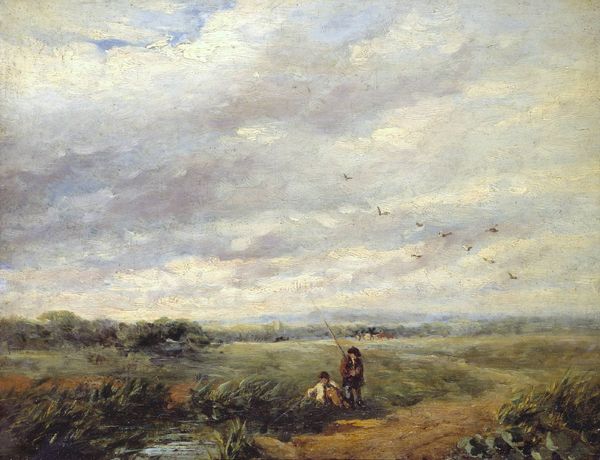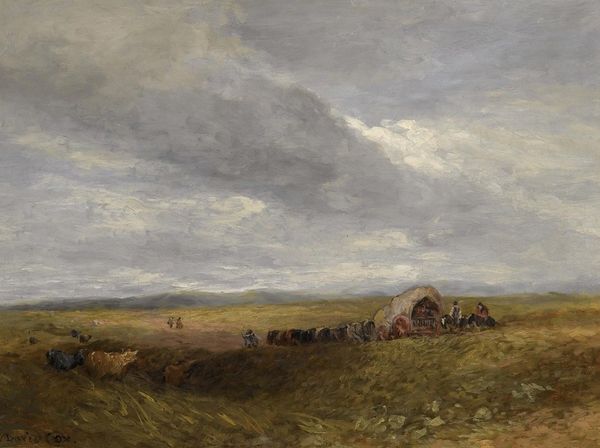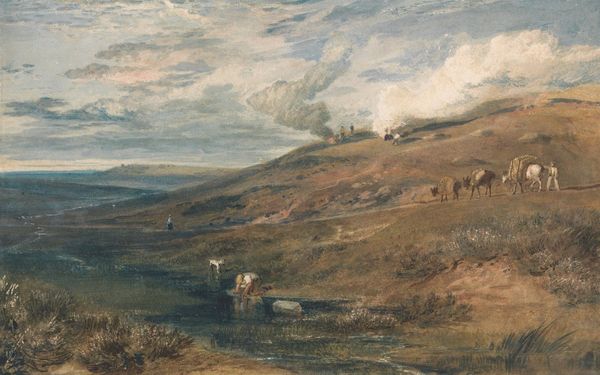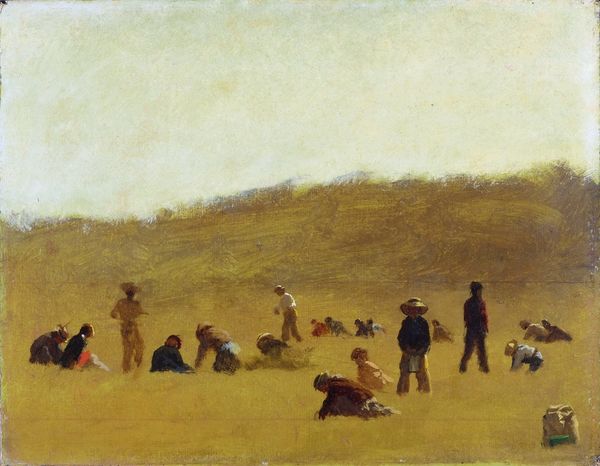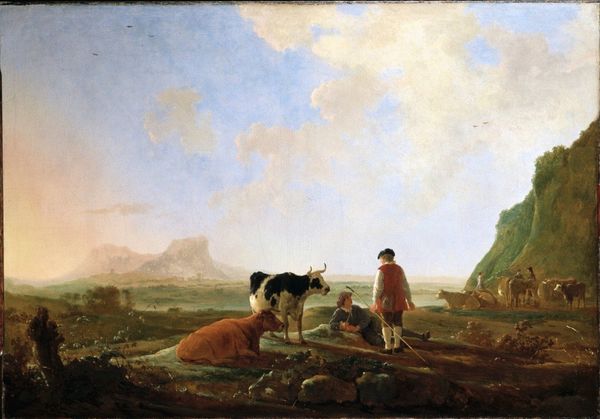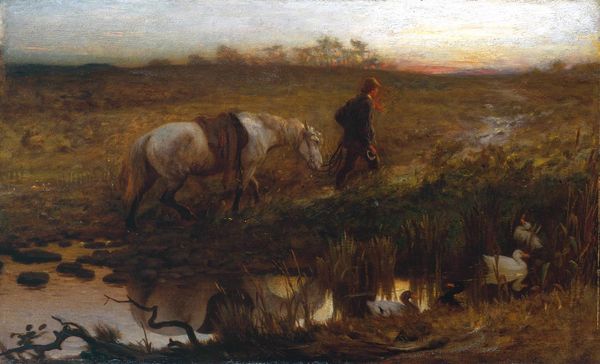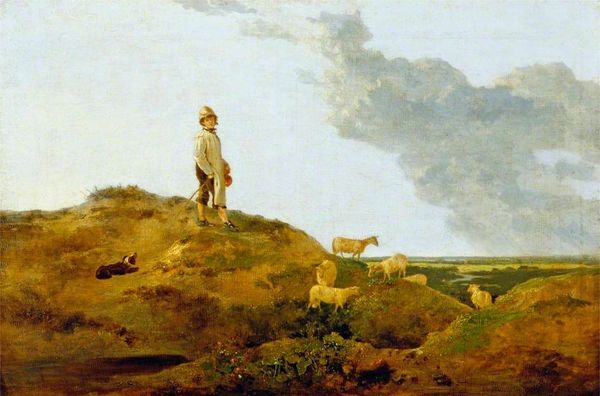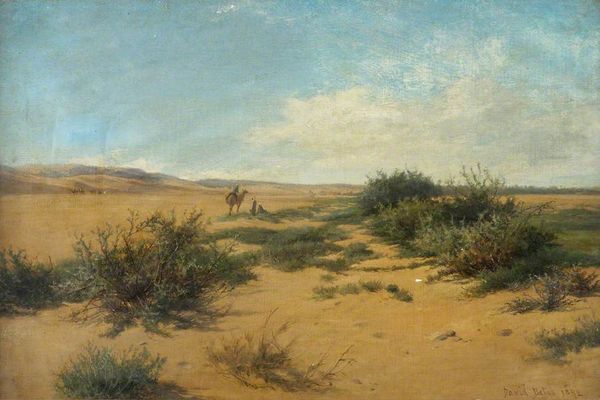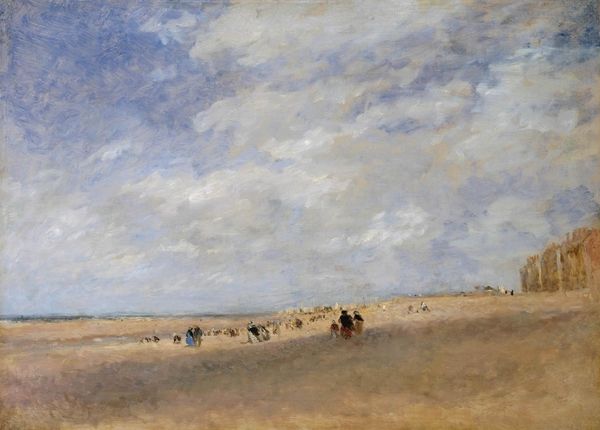
plein-air, oil-paint
#
plein-air
#
oil-paint
#
landscape
#
oil painting
#
romanticism
#
genre-painting
#
realism
Dimensions: height 30.9 cm, width 49.1 cm, thickness 2.6 cm, depth 5.6 cm
Copyright: Rijks Museum: Open Domain
Editor: This is "Tavenraat Caught a Poacher," painted between 1830 and 1860 by Johannes Tavenraat. It’s an oil painting with a very muted palette. What strikes me is how barren and vast the landscape feels, and yet there’s this charged interaction between the figures. How do you interpret this work? Curator: It's fascinating, isn't it? Beyond the immediate depiction of a poacher being caught, consider the historical context. These landscapes were often backdrops for complex socio-economic tensions. Who owned the land? Who had the right to hunt? Often, the act of poaching was a form of resistance against aristocratic privilege. Editor: So, the painting isn't just about a crime, but about social class and power? Curator: Precisely. Look at the two figures: how are they positioned? Are they equals? The landowner, or whoever is apprehending the poacher, likely represents the established order. And the poacher? What does his stance, his clothing suggest about his socio-economic standing and motivations? Is he a criminal, or someone trying to feed their family? Editor: I see what you mean. The painting suddenly feels a lot less straightforward. It becomes a commentary on wealth distribution, maybe even survival. Curator: Exactly! And note the dogs; hunting dogs were a status symbol of wealthy landowners. The animals participate in the act of social control. It provokes questions about the uneven enforcement of laws. How does that awareness shift your perspective? Editor: It makes me rethink my initial interpretation entirely. It's less about the literal scene and more about what that scene represents in a larger societal context. Thanks, I hadn’t thought about the socio-economic implications. Curator: Art often operates on multiple layers. By engaging with history and power dynamics, we unveil the deeper meanings embedded within. I will think about poaching very differently going forward!
Comments
No comments
Be the first to comment and join the conversation on the ultimate creative platform.
